Around the South of Arran, Scotland by Motorhome
We’re safely parked under dappled sunlight, surrounded by plantation trees. We’re in the Forestry Commission car park for the King’s Cave north of Blackwaterfoot on the west coast of Arran. Over the past couple of days we’ve driven the south coast of Arran, from Lamlash Bay to here. It’s an incredibly scenic part of the world, especially so when seen lit by warm sunlight under wide blue skies. I doubt our photos can do the place justice!
This part of the trip started at the beachside parkup near Lamlash. We risked staying a second night as it was such a wonderful spot, and we shouldn’t have. There were too many campers on night two, leaving no space for local dog walkers to park.

Also, as I peered out into the water one of the new arrivals joined me carrying a fishing rod. Not an issue in most places in the world, sea fishing is generally license-free and accepted. But this specific spot has a no-take zone and fishing is very much illegal. A bloke was fined over £4,000 for diving for scallops here.
A sign next to this chap’s motorhome explained all this, but he’d not read it. So I found myself telling him he could get into bother if he fished here, which I didn’t really want to do. To be fair, he was absolutely fine about it and didn’t fish but his mate shook his head saying “I’ve seen loads of people fishing!”. I felt embarrassed and thought to myself: “I’m not the police fella, just read the sign.” The locals went to a massive amount of effort to create this zone. We’ve already hogged all the parking spots, the last thing we need as motorhomers is to be seen flouting stuff like this.
After a short shop in the partially empty shelved co-op at Lamlash we cruised along the coast road (pretty much the only road) down to Whiting Bay. Here the locals have taken over management of the public loos from the council, and installed an Elsan point and fresh water tap. I eyeballed the wide blue sea while emptying the cassette and Ju filled up a water bottle and popped a donation in the box provided. What a fantastic facility. We later saw another as we drove through Blackwaterfoot.
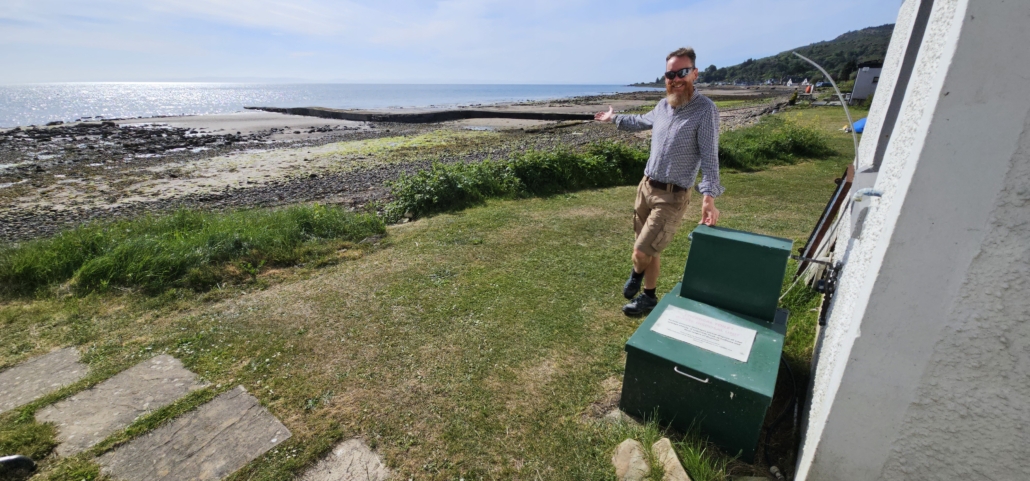
A little further along the road there’s a tolerated overnight parking spot, just set off the road but facing out to sea. We know (as least we think we know) it’s tolerated as many other car parks and other parking spots have No Overnight Stay signs, which seemed to go up around 2022. This spot was in front of houses, which is usually a no-no, so we opted to just use it for day parking.
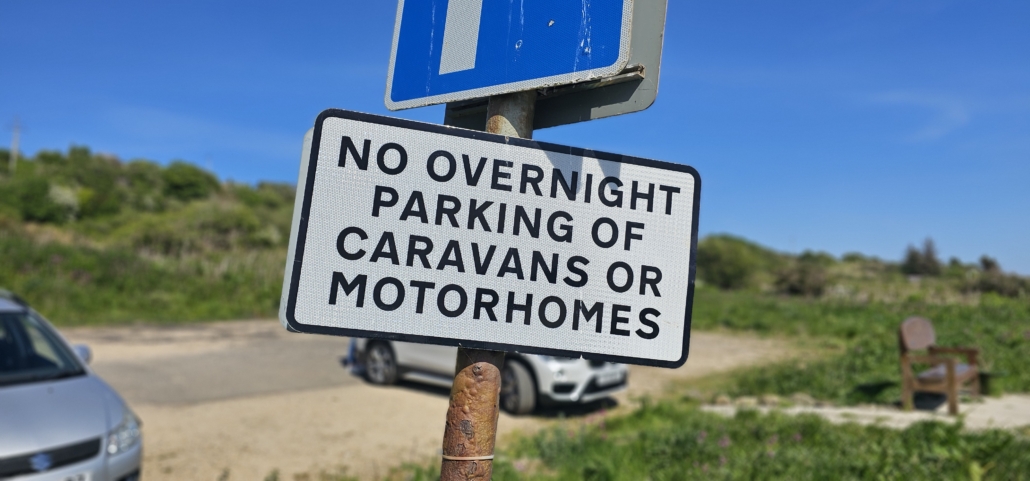
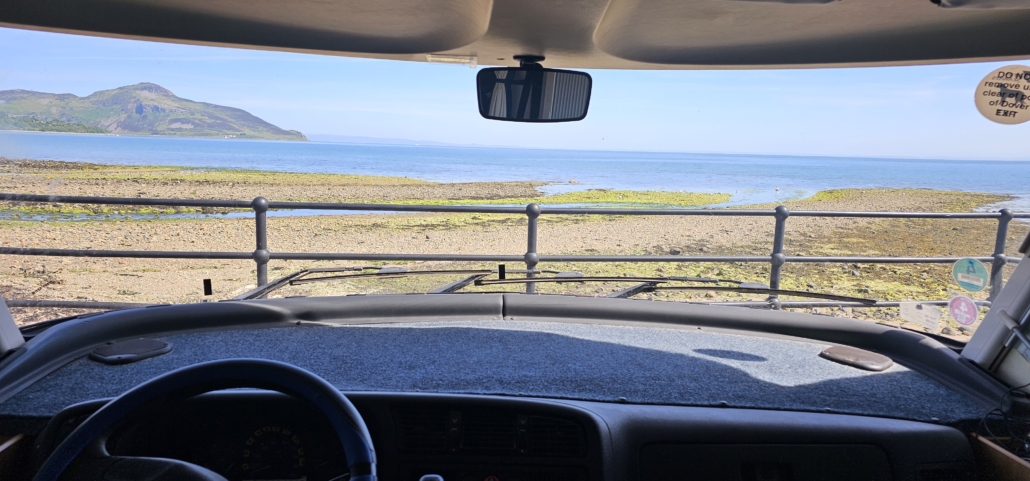
From there we took the forest trail up to the Giant’s Graves. 5,000 years ago communities worked together to haul huge stones into place to create communal graves, and some of the stones are still there. Information boards explain all this, plus the fact many of the stones have been had away over the years for other construction projects.
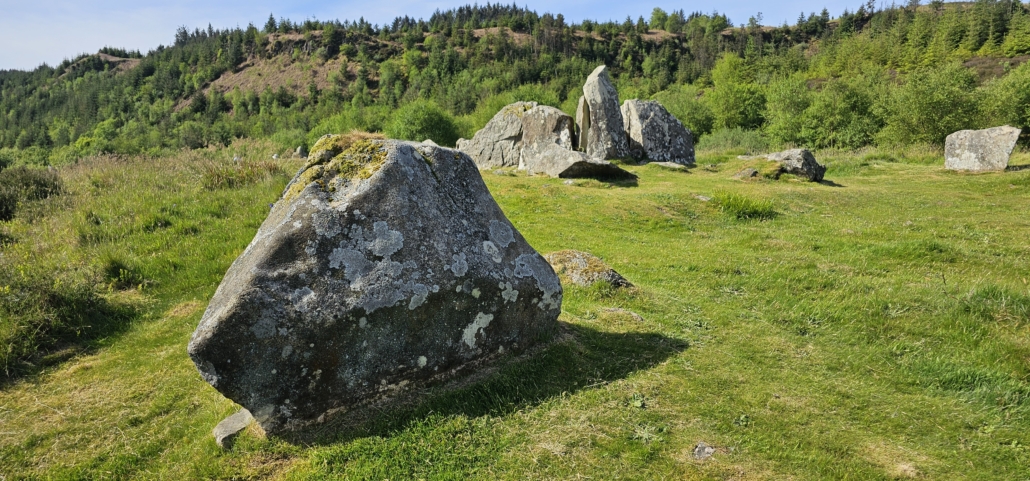
From the stones the trail continues to the Glenashdale Falls. Given the fact it’s bone dry up here at the moment, we expected little of the falls. But we couldn’t have been more wrong. At first we saw the waterfalls from the trail and were impressed at their height. But then we carried on down to the lower viewing platform and were blown away. They’re really quite a sight, and well worth the walk up to see.

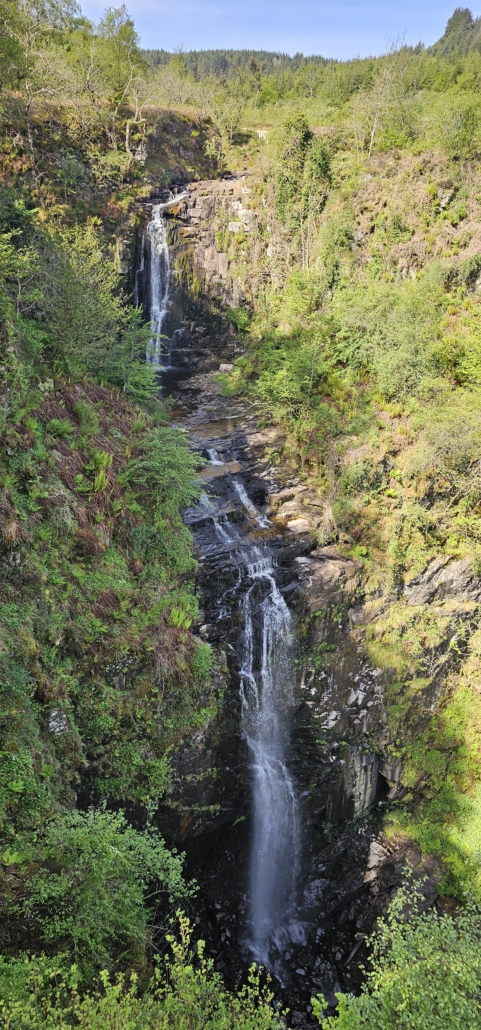
From Whiting Bay we took off south. Our AA road atlas shows the road narrowing down here and true enough, it does. The map doesn’t show it getting bumpy, but it does that too. All the way around to Blackwaterfoot, driving needed a bit of concentration. The road isn’t single track, but we’re about 2.2m wide and generally won’t fit past a car on most stretches. Unless we slowing to a halt and wedging ourselves up against the hedge, which is exactly what we’ve done. Thankfully there were few vehicles and even fewer large ones.
Our destination was a car park located on the hillside above Kildonan. It has no restrictions and lovely views over the sea. There were two other motorhomes when we arrived, one unwinding after a long day traveling from Belfast yesterday. It’s taken us almost a week to get here from the ferry port by Stranraer while they did it in a day. After getting settled we headed on foot down to the coast about a mile and a half away. We risked walking along the road and down a farm track, later finding it’s part of the 65 mile Arran Coastal Way coast path (which optionally deviates away from the coast to avoid rocky sections or those covered at high tide).
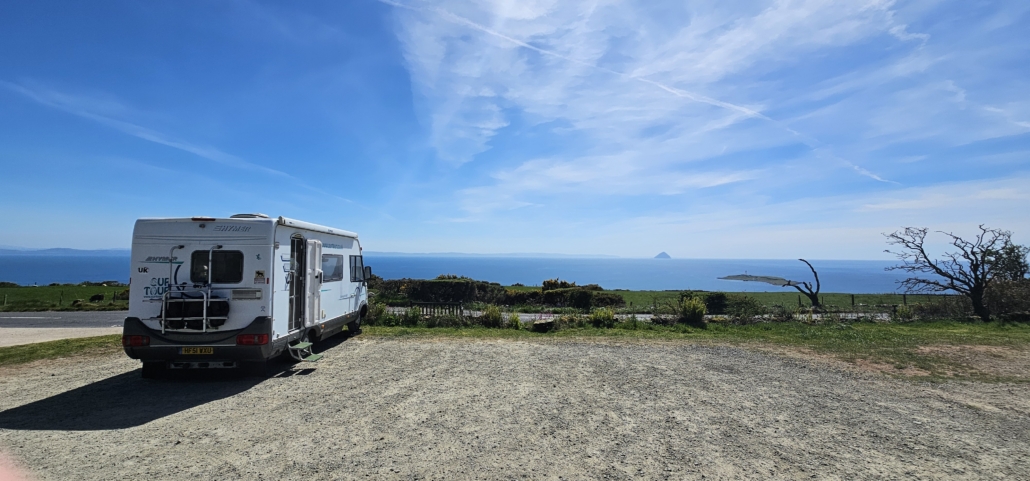

After navigating past a trio of snappy pooches, thankfully restrained by a fence, we found our way down to the sea. Arran has felt fairly ‘well heeled’ to us, with tons of lovely big detached houses, many with balconies and large gardens dropping down towards the sea. But it also feels quite remote and isolated, and Kildonan has felt the most ‘end of the world’ of the places we’ve visited on this island.
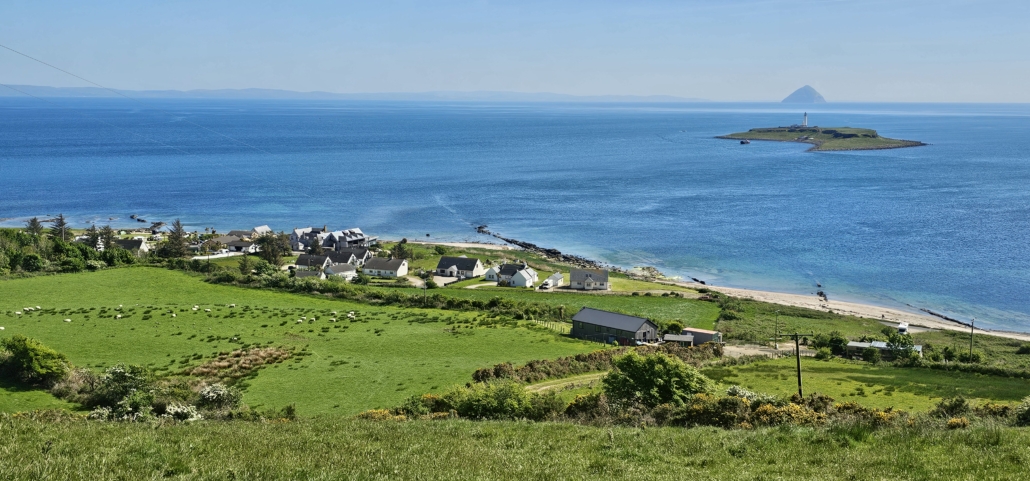
We’d tried to booked into Seal Shore Camping at Kildonan when we arrived on Arran a few days ago but they had no space. On a whim, we nipped in on foot and asked if they happened to have any pitches free. Tina in reception smiled, asked how long our motorhome was and pulled open a huge book full of writing. And I mean full! Incredibly they’d had a cancellation and we could have a sea-front pitch for a single night. We whipped out a credit card and speed-yomped back up the hill to fetch the van.
Soon after we got our breath back we were installed in a magnificent spot, ignoring the whiff of drains from the adjacent greywater point. Ju legged it to the washing machine and rammed in everything we’ve worn for these past 11 days. Plenty of evening sunshine and a light breeze went to work drying it all while I pulled on my wetsuit and took to the beautifully clear water. It’s another world down there beneath the mirror surface of the sea. Snails, shrimp, mussels, flatfish, wrasse, anemone, crabs and giant kelp to stare at through gin-clear water.
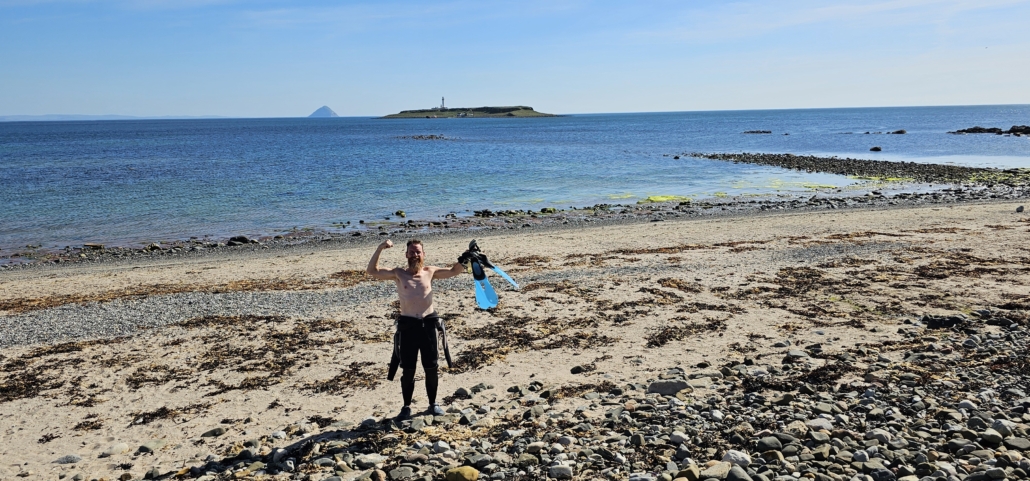

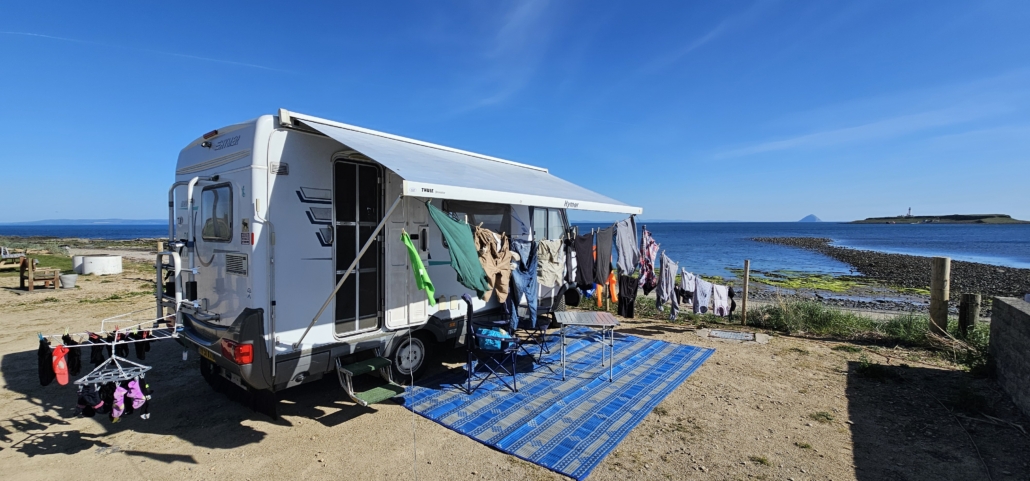
The main activity at Seal Shore seems to be chilling out. Our ancient binoculars, which claim to be lightweight but are anything but, were dragged out and focused on the ‘dyke swarms’ of rock leading out into the sea (formed when the Americas drifted away from Europe some time ago!). There’s a breeding otter pair here, and they haul themselves onto the rocks within sight of our windscreen. Although not while we were there. Ju even had a look at 5am after our neighbours told us they seem them then but no joy. Although we did spot a couple of seals bobbing around at one point.

The binoculars helped us eyeball the islands too. We’ve been able to see Aisla Craig for days now. It’s a huge cone of volcanic rock rising from the sea like something from Jurassic Park. It’s privately owned and rented to the RSPB as a bird sanctuary. At times its micro-grantite rock is harvested to make curling stones. The other, closer, island is Pladda. It’s lighthouse is automated now like they all are, and the island and lighthouse cottage are privately owned. The whole island was sold recently for something like £350,000 to a development company. If Kildonan feels remote, Pladda must feel the end of the Earth.
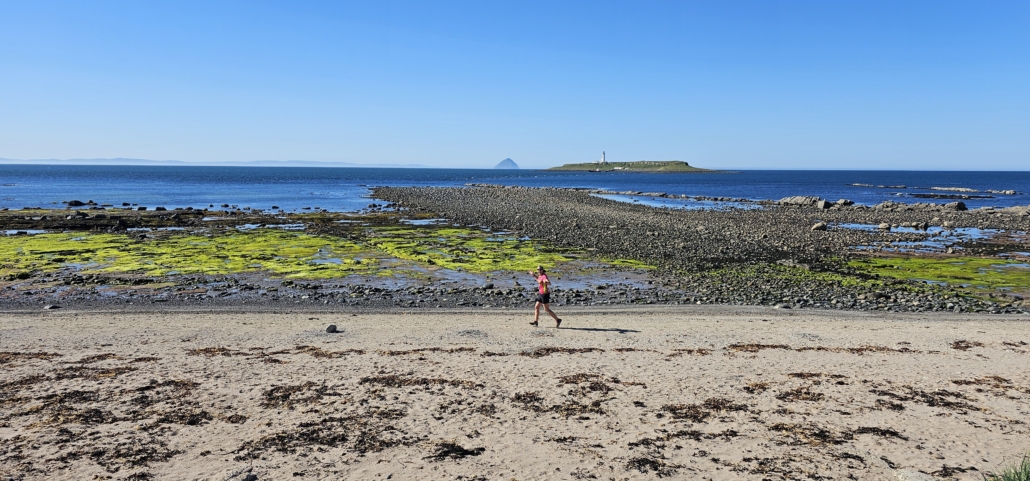
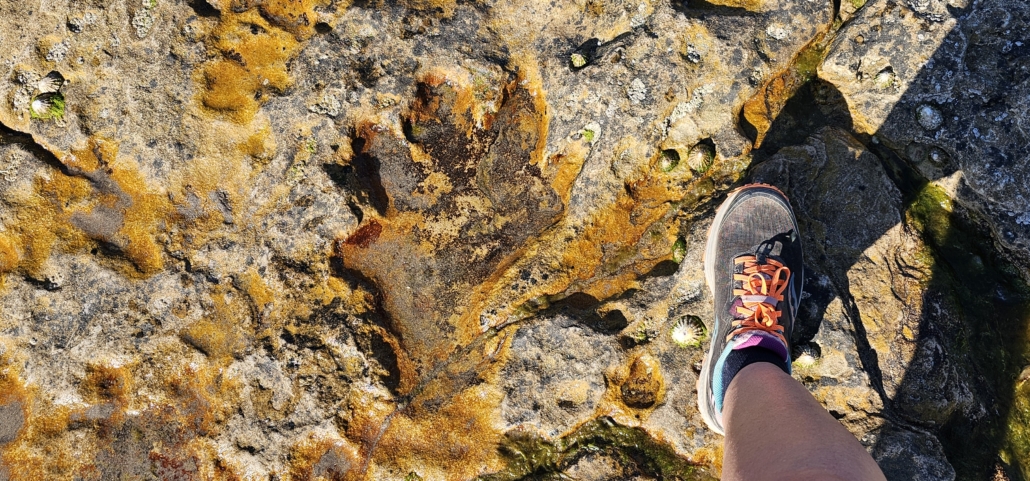
No more cancellations came through, so we reluctantly left Seal Shore this morning, heading west over to here. The road was more taxing, especially as we headed to rejoin the A841 shortly after leaving the site. Narrow, uphill, hedgy, I was very glad we didn’t meet anyone on the way up!
On park4night there’s a big gap along here with no places to stay, official or otherwise. And as we drove it we could see why. If not quite cliff top, the landscape steeply drops off to the sea. Nothing dangerous about it, just an awkward spot to carve out any car parks so no-one has. The road twisted around at times too, and minor celebrations broke out in the cab each time we hit a straight section.

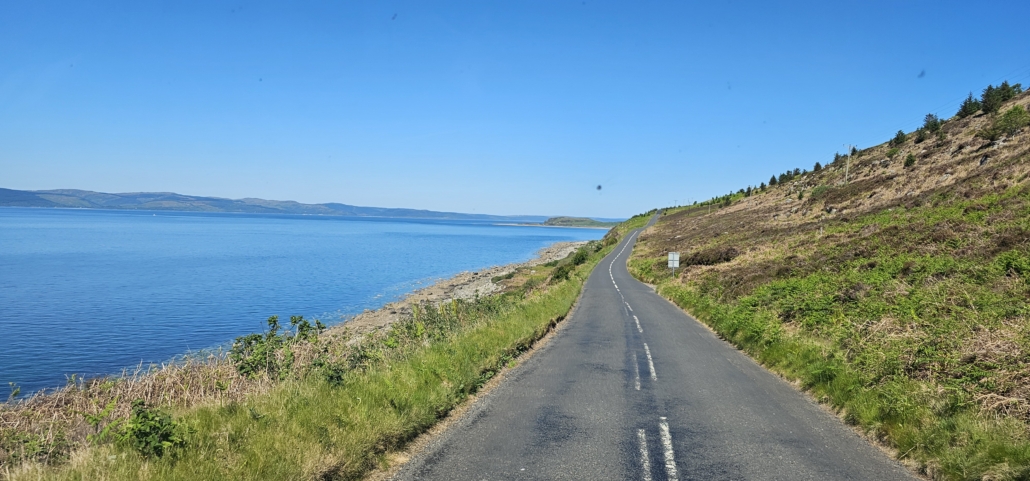
We didn’t stop in Blackwaterfoot as it was rammed with cars. Yesterday we’d met the chef working at the hotel there while we were parked above Seal Shore. He was out for a trip in his own van, and told us he’d worked over 40 years as a chef. yes, it’s stressful he told us, but he couldn’t stop. We looked up reviews for the place later and they were glowing about the food there, which might explain all the punters.
On a few more miles and we’re here. We thought the car park was closed, as the first area we came to has barriers. We could see several of the huge plantation pines had been toppled, presumably in winter storms. But then Ju spotted the green Forestry signage for this area a few metres further up the road. Pulling in we found space among the cars, all of which have since left, and took in the three mile King’s Cave walk. Well worth it if you’re here, the views along the coast are fantastic. It’s reminded us of wild camps in northern Norway being here.
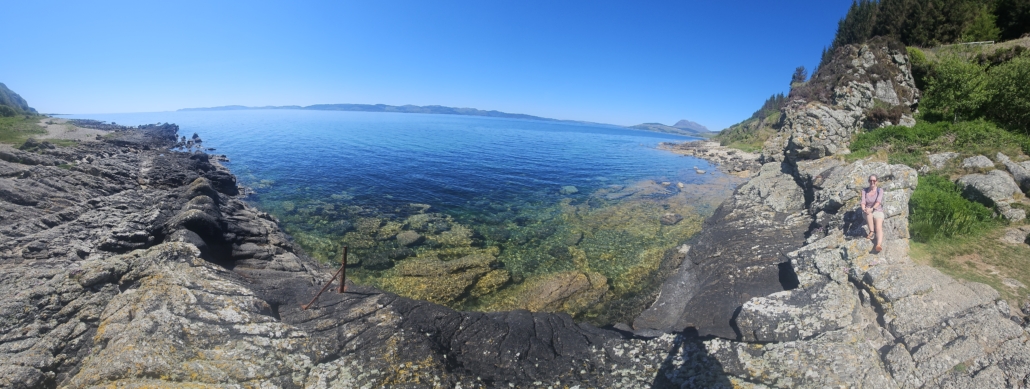
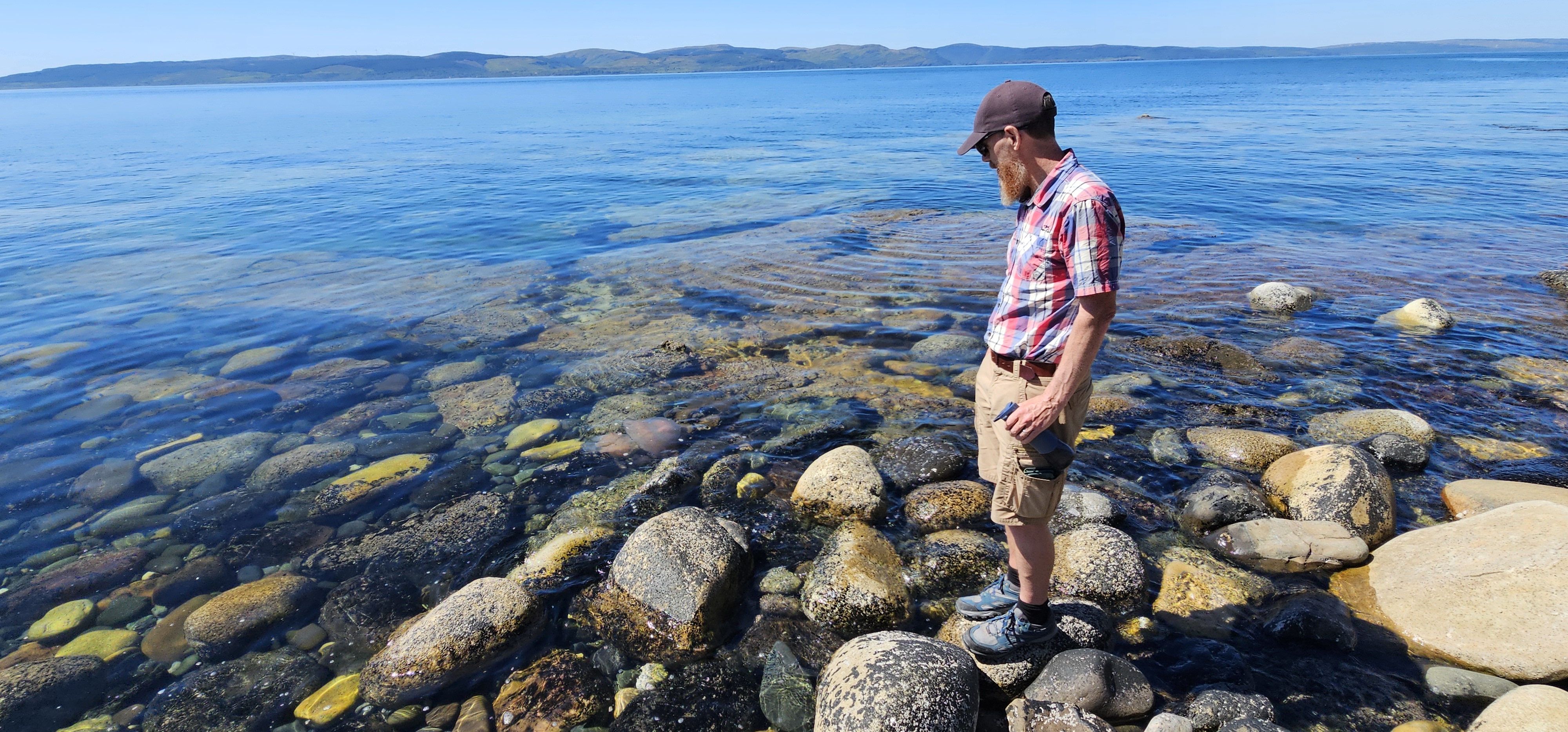
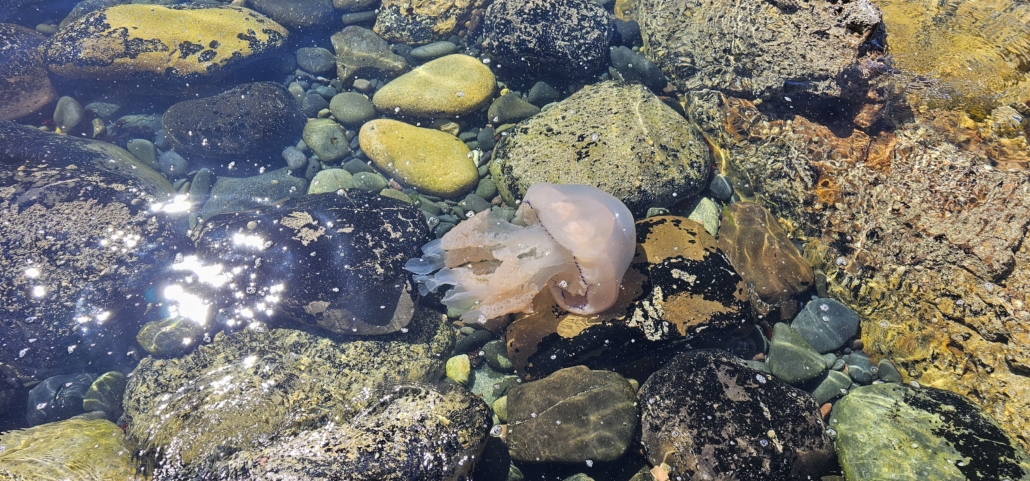
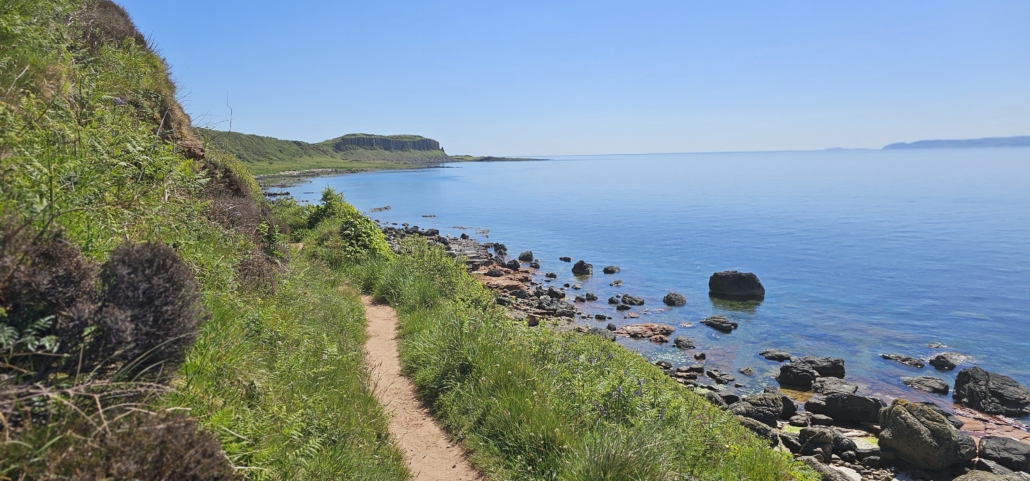
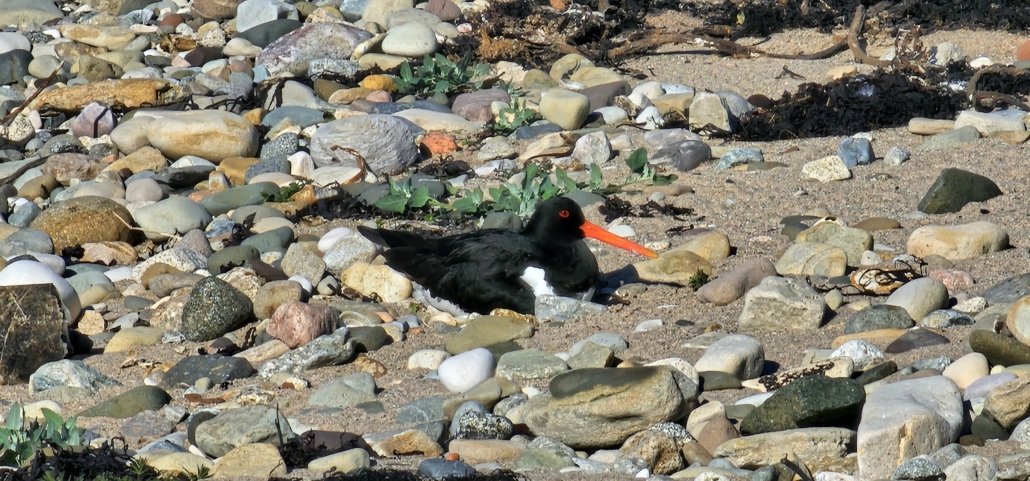

It’s 6:30pm now and there’s only one other motorhome in here. We know the west coast of Arran is very remote with few houses and a lot of coast road with a ton of overnight spots. So we think everyone’s down there. We could just make out some tiny white oblongs from the path today, which we guess are motorhomes. We’ll head down tomorrow and have a look.

Cheers, Jay

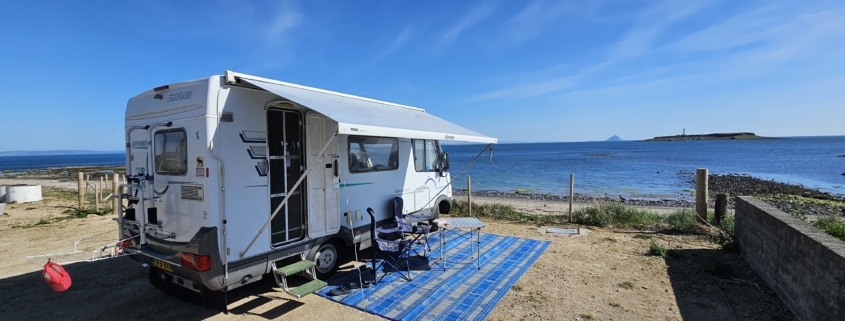
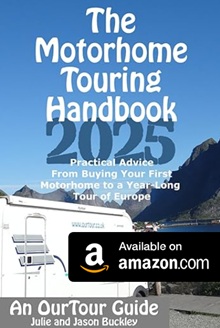
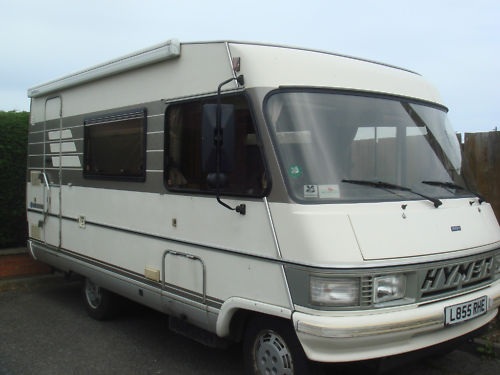
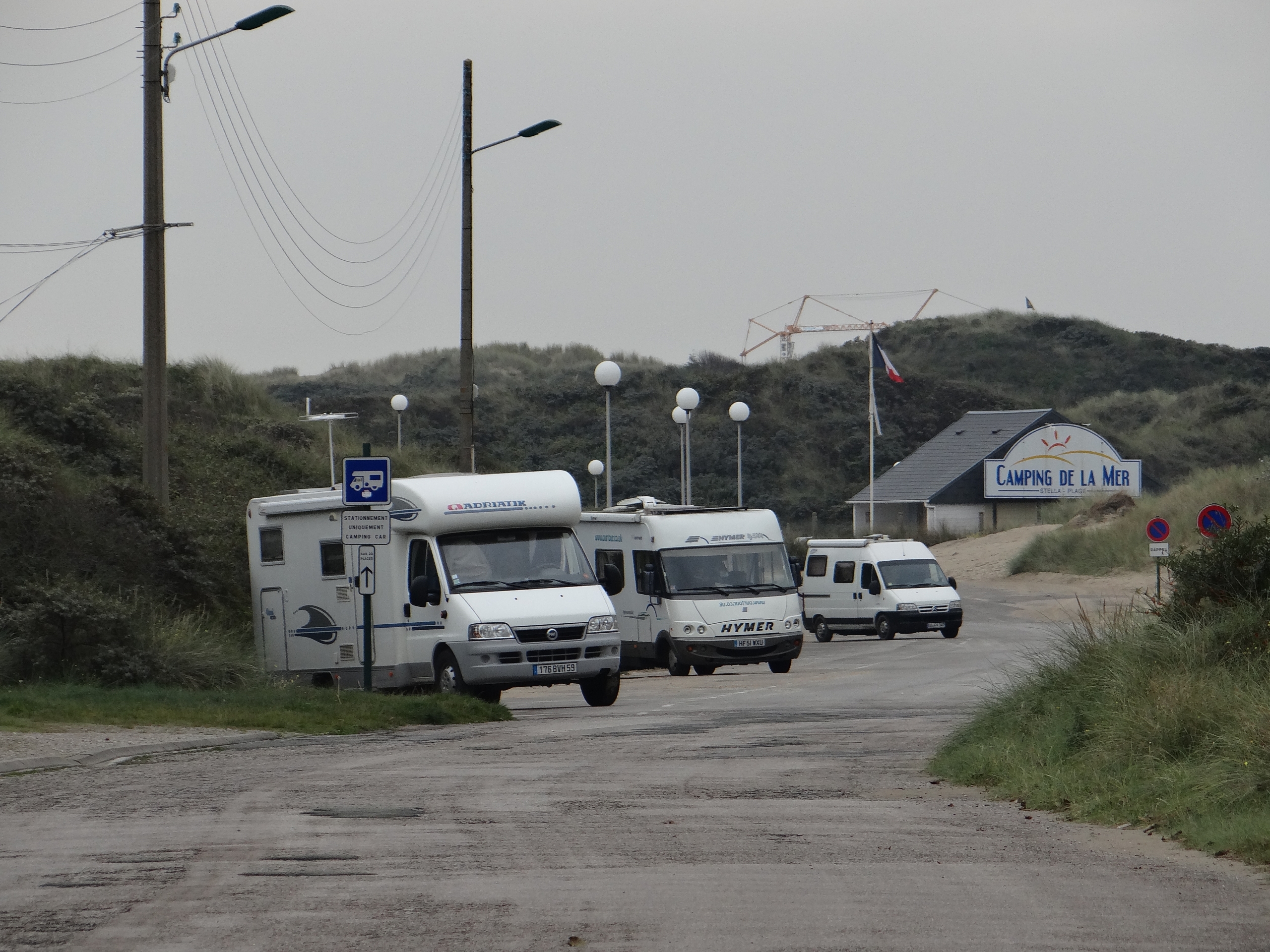
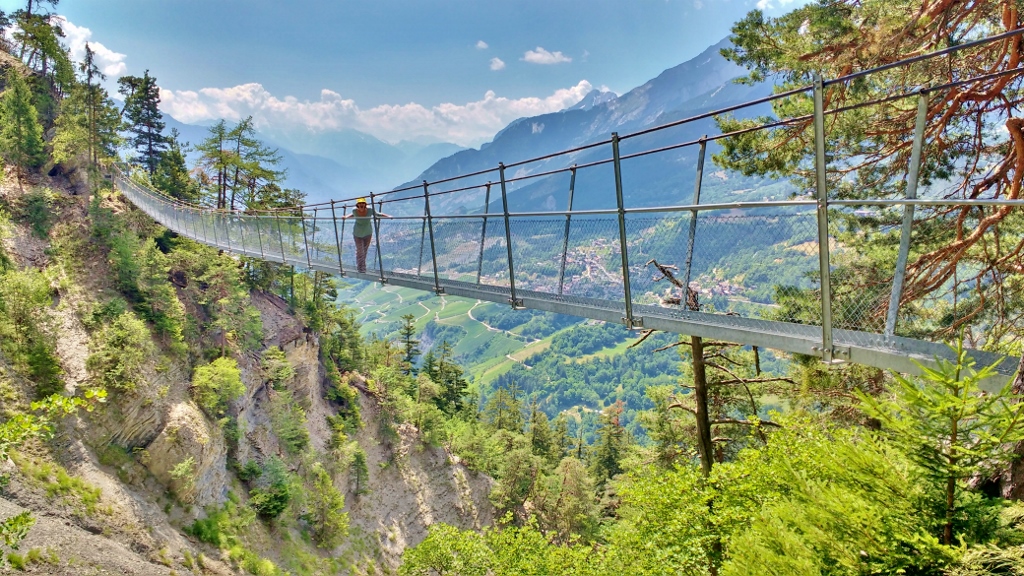
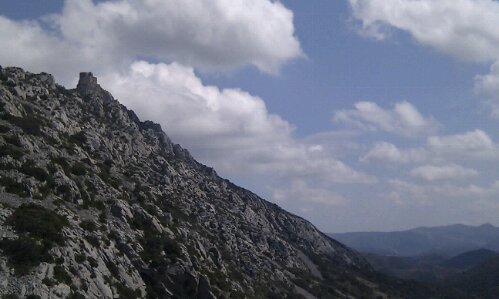

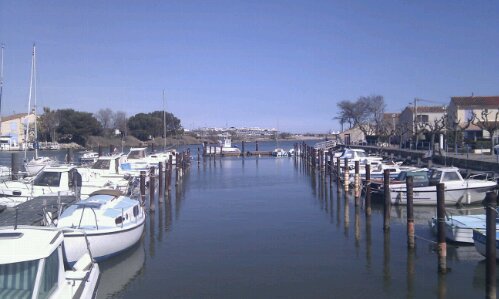


Leave a Reply
Want to join the discussion?Feel free to contribute!